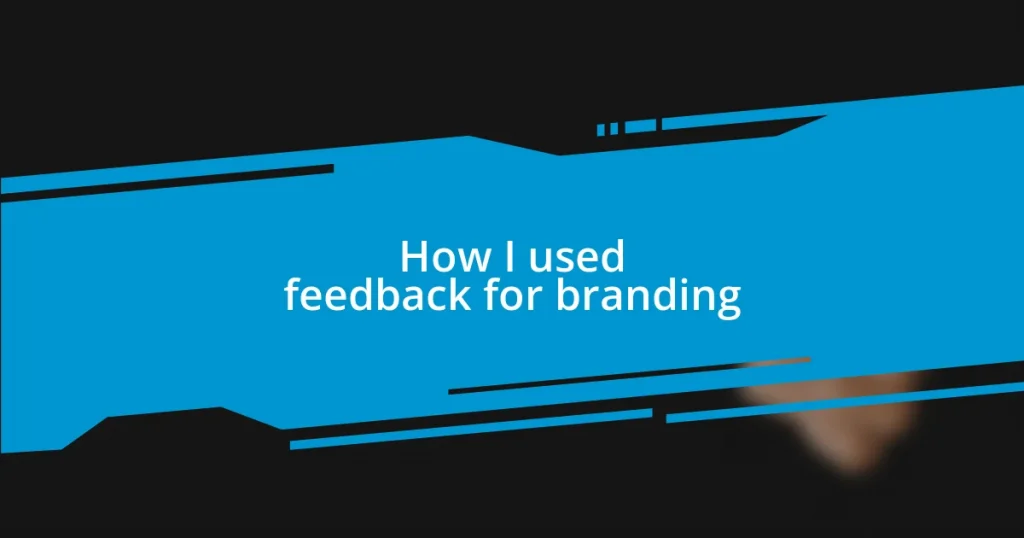Key takeaways:
- Engaging with customer feedback early on revealed critical gaps in branding, highlighting the importance of actively listening for growth and refinement.
- Incorporating strategic feedback from social media, surveys, and customer reviews significantly transformed product offerings and fostered a sense of community and connection.
- Continuous evolution based on audience insights not only improved brand messaging but also created a partnership with customers, leading to enhanced loyalty and satisfaction.
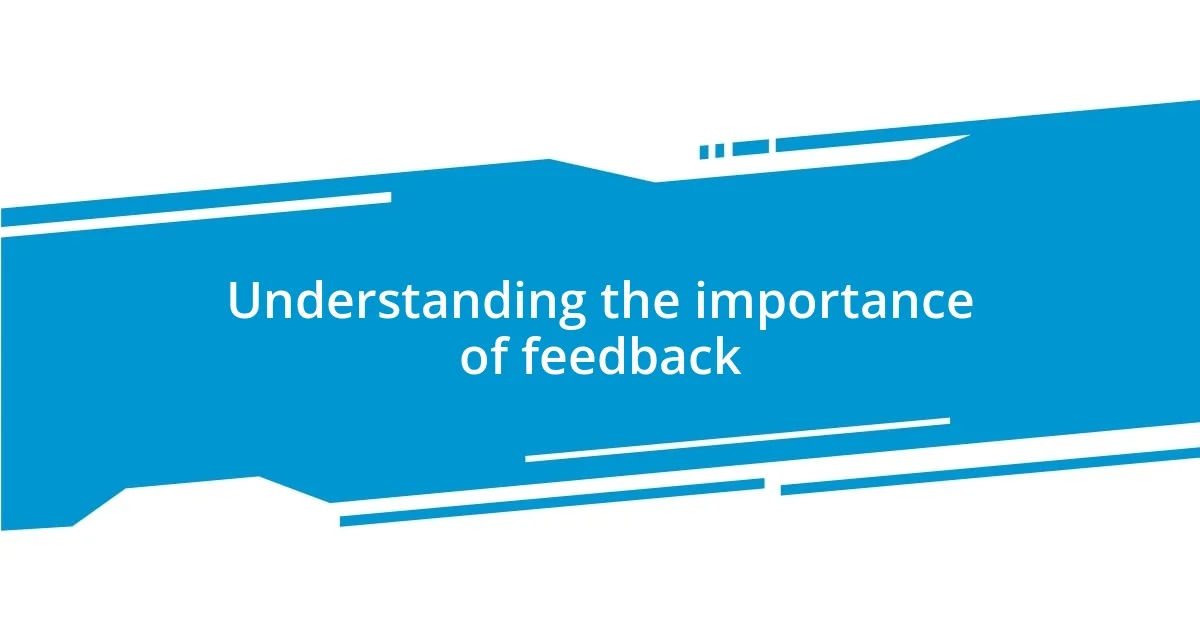
Understanding the importance of feedback
Feedback is like a mirror reflecting back how others perceive your brand. I remember when I first launched my small business; I was so set on making things perfect that I didn’t ask for input from my customers. It was a wake-up call when I finally gathered their thoughts and realized how much I had missed the mark.
Engaging with feedback can often feel daunting. I once received a particularly harsh review, and my initial reaction was defensive. But after some reflection, I understood that this criticism was a golden opportunity for growth. How often do we hold onto our own ideas, believing they’re flawless? Sometimes, a fresh perspective can truly enlighten us.
Each piece of feedback is a chance to refine and enhance your branding. For instance, I took to heart a suggestion about my logo’s color scheme. When I made the change, the subsequent positive response from my audience made me realize just how crucial it is to listen to those who interact with your brand. Isn’t that what solidifies a connection? By valuing feedback, we not only improve our offerings but also foster a sense of community.
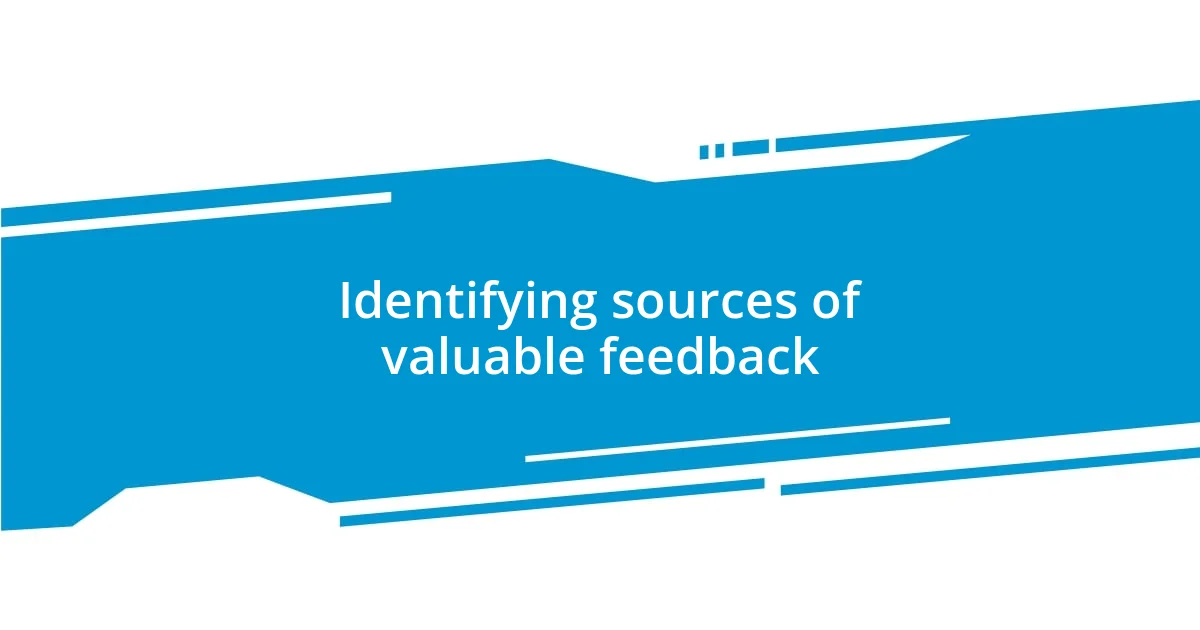
Identifying sources of valuable feedback
Identifying sources of valuable feedback requires a strategic approach. I often turned to social media platforms, as they serve as bustling hubs of conversation about brands. When a follower mentioned how a specific product helped solve their problem, it hit me that their experience could shape my offerings. It’s fascinating to see how real-time engagement can directly inform your branding strategy.
Surveys and polls also stand out as vital tools, especially when trying to understand customer preferences. I once sent out a simple question to my email subscribers: “What would you like to see next from us?” The responses not only surprised me but led to a successful product launch. It was a reminder that directly asking your audience can yield rich, qualitative insights that you might not have considered before.
Lastly, consider customer reviews and testimonials as gold mines for feedback. I learned this firsthand when a client shared their journey with my service. Their words resonated with potential customers, highlighting features I hadn’t even marketed. This experience taught me that the strongest endorsements often come from the clients themselves. I realized that actively analyzing these sources can truly align my brand with my audience’s needs.
| Source | Value |
|---|---|
| Social Media | Engagement and real-time insights |
| Surveys and Polls | Direct responses guiding product development |
| Customer Reviews | Authentic testimonials that resonate |
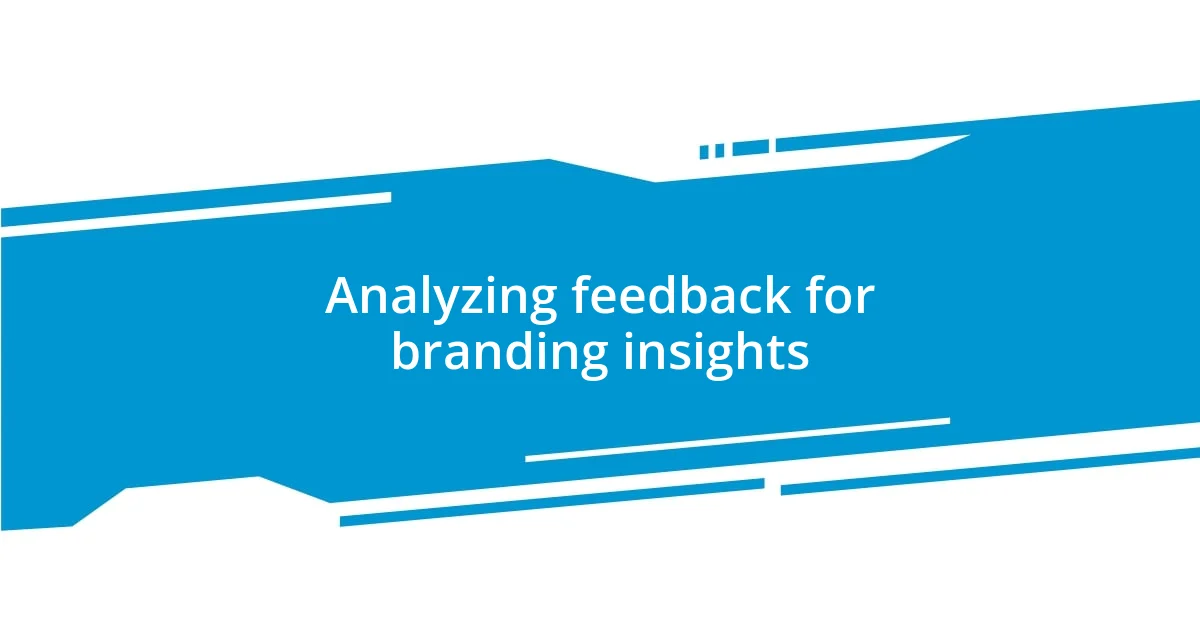
Analyzing feedback for branding insights
Analyzing feedback is an art that requires careful consideration of the nuances in customer responses. I remember pored over the reviews after launching a new product and found recurring themes that made me rethink my entire branding approach. Instead of feeling overwhelmed, I felt empowered by the clarity of my audience’s insights. This process ignited a spark—each piece of feedback revealed a hidden layer to my brand that I hadn’t recognized before.
- Thematic Patterns: Identifying common threads in feedback helps clarify brand perception.
- Emotional Reactions: Customers often express feelings attached to their experiences, which can guide authentic branding.
- Actionable Suggestions: Specific recommendations can highlight areas for improvement while aligning your brand with customer expectations.
Through these analyses, I discovered that customers not only wanted quality; they craved connection. This realization drove me to weave emotional storytelling into my branding, making it more relatable and compelling.
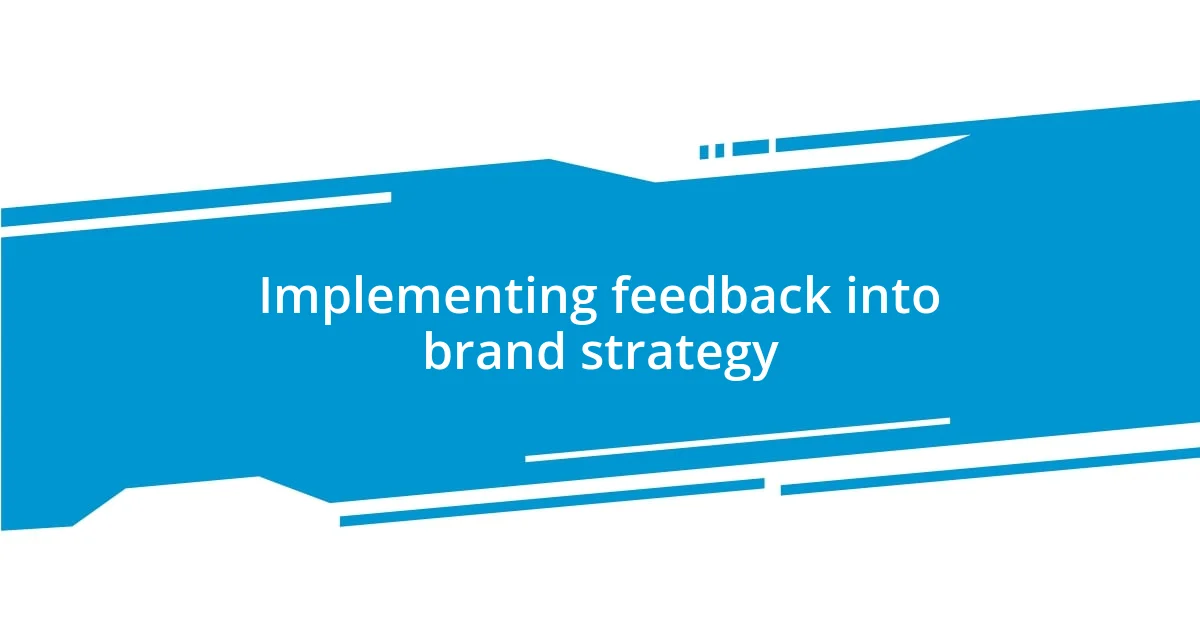
Implementing feedback into brand strategy
Implementing feedback into brand strategy transforms not just your offerings but also the essence of your brand. I clearly remember a time when I stumbled upon an insightful comment on Instagram that challenged my initial vision for a product. Instead of dismissing it, I decided to dive deeper and actually realized that this feedback opened up a dialogue with my audience, fostering a sense of community. Isn’t it amazing how a single comment can pivot your branding trajectory?
My approach has always been to treat feedback as a compass guiding my strategic decisions. Once, after analyzing customer surveys indicating a desire for more sustainability, I felt a wave of excitement. What if I could integrate eco-friendly practices into my manufacturing? It wasn’t just about shifting products; it was about aligning my brand values with those of my consumers. This synergy not only reinvented my brand but reinforced loyalty among customers who shared those same values.
As I incorporate feedback, I prioritize authenticity in every adjustment I make. The emotional connection I build with my audience is crucial, and one poignant testimonial about how our service changed a customer’s life always stays with me. It’s a vivid reminder that implementing their insights means honoring their experiences and fostering a brand that truly resonates. Isn’t that the ultimate goal of branding—to create something that not only serves but also connects?
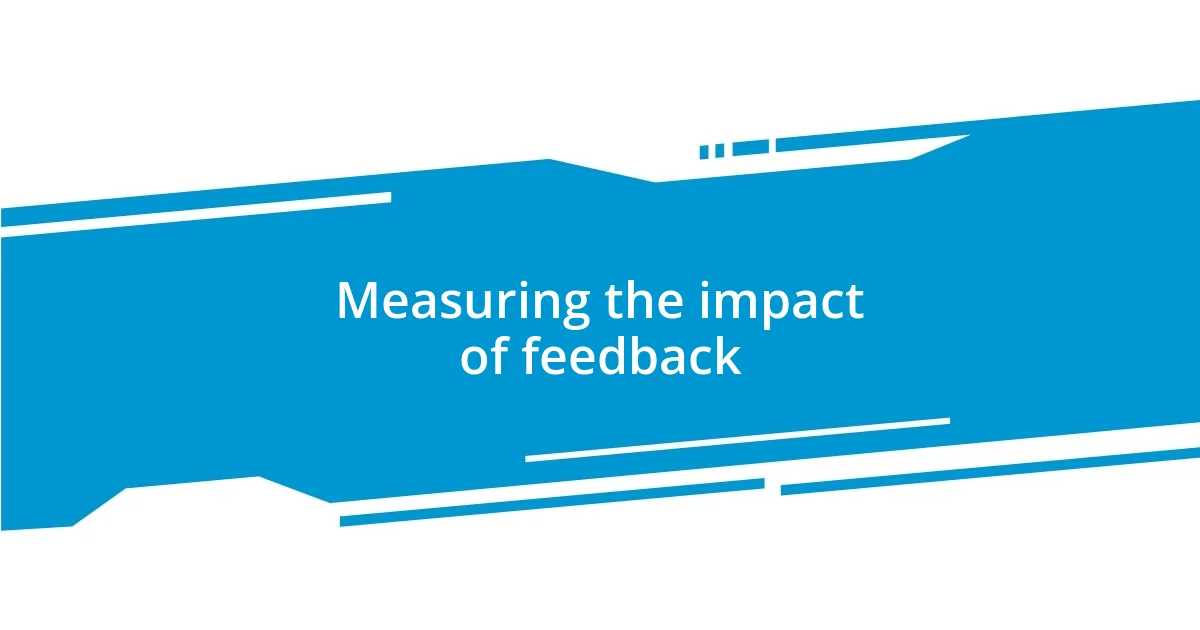
Measuring the impact of feedback
Measuring the impact of feedback isn’t just about tallying responses; it’s about understanding the depth of those responses. I recall a particular moment when I reviewed customer surveys and noticed a dramatic increase in mentions of my brand’s transparency. This wasn’t merely a number; it reflected a collective shift in how my audience perceived the brand. How incredible is it that a simple statistic could represent such a fundamental change in trust?
To really grasp the impact of feedback, I employed a qualitative approach, diving deep into customer comments. One customer recounted their experience of how my product helped them during a tough time. This emotional response was a powerful reminder of the real-world effects my brand was having. It felt personal, almost like a conversation with a close friend, and it reinforced the notion that behind every piece of feedback is a human story, waiting to be understood.
In my journey, I also learned to track changes over time. By reanalyzing feedback at regular intervals, I could identify trends that weren’t evident at first glance. For example, a slow but steady increase in requests for more diverse product lines became a call to action. I realized that measuring feedback’s impact means being attuned to both immediate and evolving sentiments; it’s about becoming a proactive listener rather than a reactive manager. Isn’t it amazing how feedback can serve as a living document of your brand’s journey?
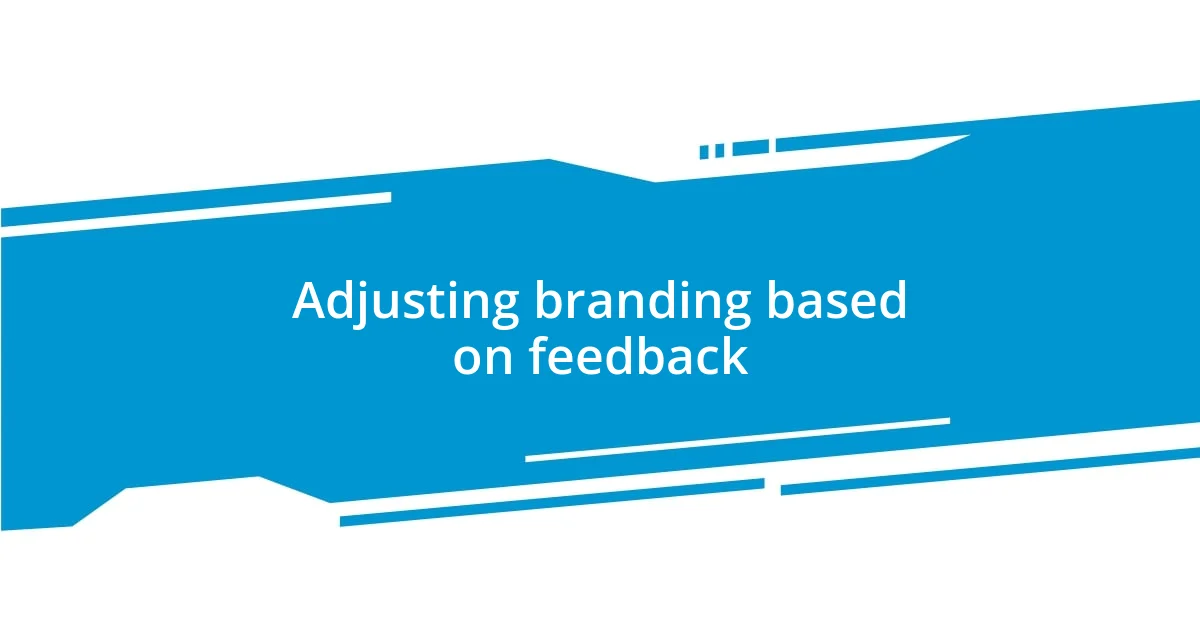
Adjusting branding based on feedback
Adjusting branding based on feedback has been a game-changer for me. I vividly recall a time when customer feedback highlighted confusion around my brand’s message. Taking that to heart, I held a brainstorming session with my team, which led to a refresh of our visual identity. It was incredible to see how a few tweaks not only clarified our message but also made our audience feel more connected to what we were trying to convey. Isn’t it fascinating how even minor changes can evoke such a strong response?
One memorable adjustment came when I received feedback that my product packaging felt out of touch with my audience’s aesthetic preferences. Instead of feeling defensive, I embraced it. I spent hours sketching new designs that reflected my brand’s essence while incorporating the fresh ideas my customers shared. When the new packaging launched, the excitement was palpable; customers felt like they had a hand in shaping the brand. This reinforced my belief that listening truly enhances the branding experience. Who knew that shifting a simple design could create such a buzz?
As I continued this process, I found that transparency in adjustments became fundamental. After integrating feedback, I shared the journey with my audience through social media updates, revealing the behind-the-scenes decisions. The response was overwhelmingly positive, with many expressing appreciation for being part of the evolution. This experience solidified my understanding that adjusting branding isn’t just about responding to feedback; it’s about fostering an ongoing conversation with my community. Isn’t it wonderful when your brand grows alongside your audience?
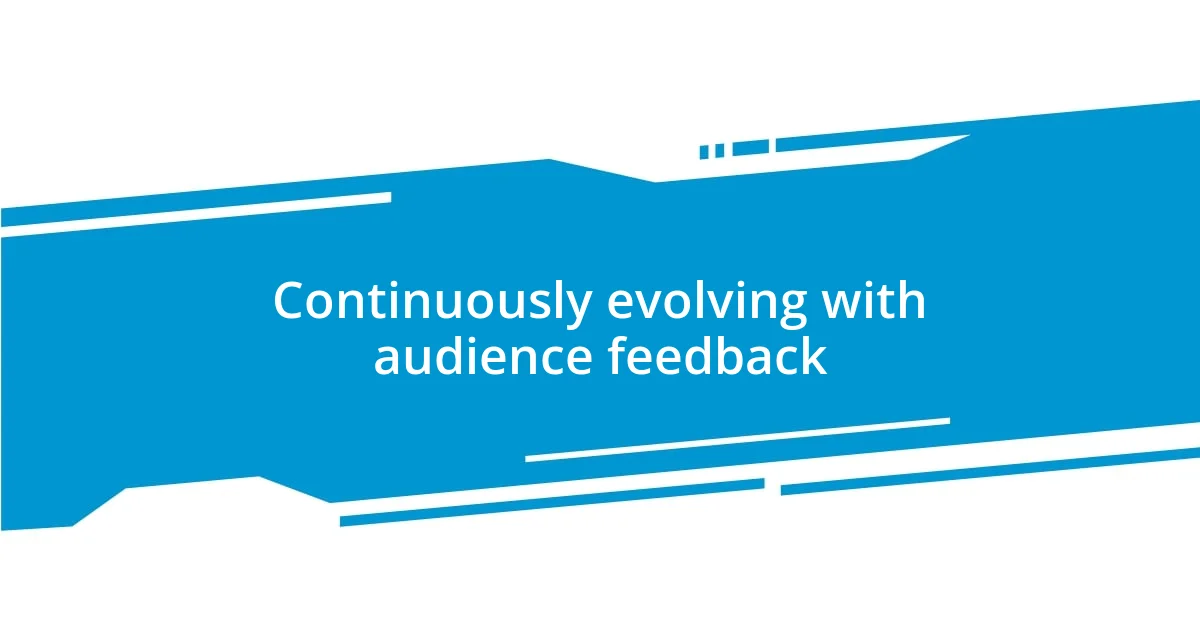
Continuously evolving with audience feedback
Embracing audience feedback has transformed my approach to branding with a continuous evolution that’s rich and rewarding. I remember when I launched a new service and the initial response was tepid. Instead of seeing it as a setback, I hosted an informal online chat with customers to delve deeper into their thoughts. The insights I gained were invaluable, revealing not just what they liked, but also their specific expectations. It was enlightening to connect with my audience on such a personal level, and the changes I implemented afterward made a notable difference in customer engagement.
There’s something powerful about actively listening to your audience; it creates a partnership rather than a distant brand-customer relationship. I once gathered feedback from a focus group about an ad campaign, and one participant candidly shared that it didn’t resonate with their values. Rather than disregarding this perspective, I felt compelled to reevaluate our message. When I adjusted the campaign to reflect what truly mattered to my audience, it felt like a shared victory. Have you ever experienced that moment when you realize you’re not just selling a product, but also building a mutual understanding with your customers?
As this journey unfolds, I’ve found the need for flexibility and adaptability to be crucial. There were times when I enclosed a feedback form with my products, and the responses were often filled with thoughtful suggestions. What struck me most was how a small but passionate group advocated for eco-friendly options. This feedback ignited a fire in me; I immediately began researching sustainable materials and packaging. Witnessing the excitement in my community as we launched a new eco-conscious product line reinforced my belief in evolution through feedback. Isn’t it amazing how the voices of a dedicated audience can steer a brand toward greater purpose?










